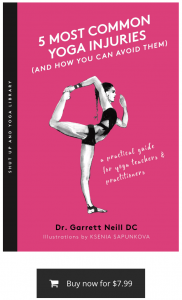Budapest is the kind of city where one needs yoga. It’s a heavy-drinking, smoky metropolis with rich food and decadent sweets. A city with neighborhoods entirely devoid of trees and depressing Soviet-era housing blocks. A city divided by a river – the Danube, which separates Buda on the West from Pest on the East – and often torn apart by the ravages of history. Don’t be mistaken – the city is also impossibly romantic and vibrant, but there’s a darkness that underlies the culture.
I was born and raised in the United States, but this is where I’m from. Both my parents emigrated to America in 1956 after the failed uprising against the Russians, who had occupied the city since the Second World War. Though my parents fled, my entire extended family still lives here. I’m a dual citizen; I repatriated to Hungary when she joined the European Union in 2004 and lived in the capital for about a year. Since then, I’ve tried to make a point of visiting frequently. It’s important for me to stay connected to my roots, practice my mother tongue, and be actively involved in the lives of my relations.
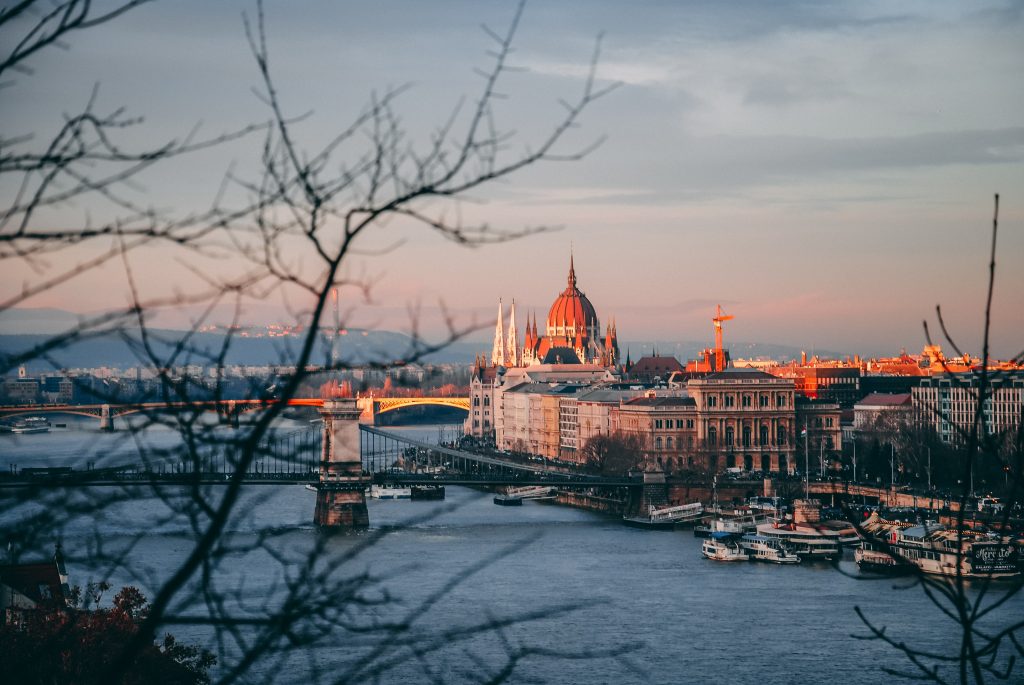
I’m here this time for my youngest cousin’s wedding. The civil ceremony at the local magistrate’s office is followed by a lavish affair at Ankér’t. It’s located in the heart of the 7th district, the former Jewish quarter where both my parents grew up, and now the nexus of the party scene. Budapest is known for its romkocsma (ruin pubs), previously abandoned building transformed into pubs and dance clubs, where locals and travelers alike party every night of the week.
The Jewish quarter was largely abandoned and in ruins for most of the latter half of the 20th century, its former inhabitants having been confined within the ghetto walls or deported during the Holocaust. The city had been liberated by the Soviet army, and the Russian-backed Hungarian government ruled for over forty years with totalitarianism and Cold War fervor. Survivors tried to put their lives back together after the war, despite the absence of family members, loss of personal property and the destruction of community. The failed independence uprising of ‘56 was the proverbial straw – unable to imagine life under such conditions, 200,000 fled in the final days of open borders.
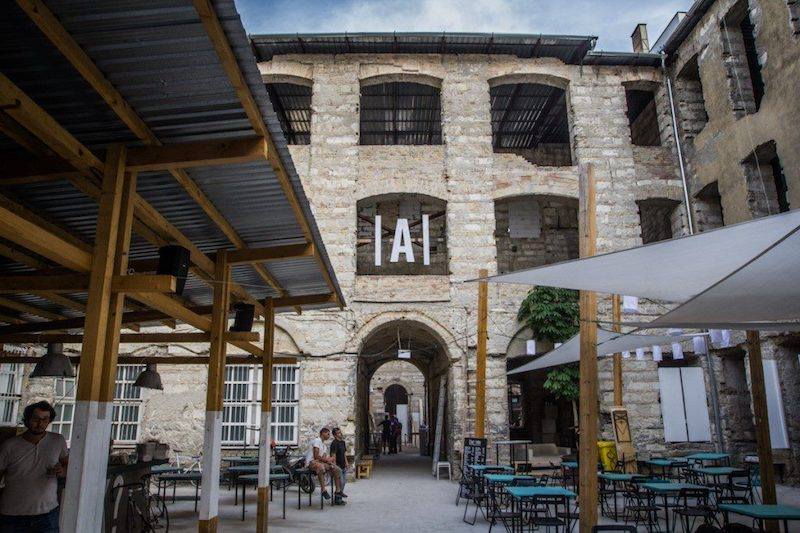
The sixties and seventies were difficult times in Hungary, with the suppression of personal freedoms and civil liberties. The eighties marked a time of unrest and upheaval as people began to organize against the reigning regimes. Tired of the lack of educational and professional opportunities and controlled access to goods and services, many people fled to the West. Fed up with fear of reprisal for self-expression, those who remained began to demand increased access to information and open elections.
Over time, the youth began to take over abandoned buildings, creating squats – illegal live/work spaces for artists, writers, musicians, and social radicals. In the late 90s, the squat scene exploded all over Eastern Europe. Venues emerged in cities such as Berlin and Prague that became famous for hosting international bands, throwing wild parties, and holding political action events.
The popular uprisings finally succeeded in the dissolution of the USSR, the fall of the Berlin Wall, and the end of the Cold War. And a slow renaissance began in the city, spurred on by Hungary’s entree into the EU and the influx of foreign capital and fresh energy. Today, the city is an interesting mix of old and new – in architecture and ideology – with shabby chic venues such as Ankér’t, the unimagined legacy of the squat scene.

Anker’t
Paulay u 33.
Budapest
+36 30 360 3389
We spend the night stuffing our bellies and pickling our livers with domestic wines and pálinka (Hungarian brandy). I wake up the following morning desiccated and sore from too much dancing in heels and too many pieces of cake (igen, és pia), and decide to head directly to one of the city’s numerous thermal baths. There’s a rich tradition of bathing in Hungary. The Romans built the first spa at Aquincum in the first century AD at a natural hot spring just north of the present city. The Ottoman Turks, who occupied the city for 150 years, capitalized on the area’s thermal potential and constructed a series of hammams which exist to this day.
The Dandár Bath is closest to where I’m staying, and I crawl my way there to partake of its healing waters. It’s relatively modern by BP standards. Built in the 1930s, it lacks the grandiosity of some of the more famous bathhouses, but is affordable, clean, and has all the necessary amenities. There are several indoor baths of varying temperature, an outside pool surrounded by a garden with lawn chairs, and a small canteen where one can get drinks and snacks. The mineral-rich waters, steam rooms, and dry sauna do the trick, and after hours of sweating out toxins, I emerge feeling human again.

Dandár Gyógyfürdő
Dandár u. 5-7
1095 Budapest
+36 1 215-7084
By public transportation: tram routes 2 and 24 and bus routes 23 and 54.
The thermal bath is located in the vicinity of the Boráros square.
Access to thermal baths, sauna, and massages available.
Seeking sustenance, I find my way to VegaKukcó, a charming little vegetarian buffet en route back to my cousin’s place near Corvin Negyed, a hip neighborhood with a new pedestrian zone bustling with shops and restaurants. The offerings vary daily, but there are always vegan and gluten-free options. I eat a plate of pumpkin stew served with brown rice. It’s not especially flavorful but hearty and satisfying.
This is the new Budapest, where a profusion of restaurants has sprung up in recent years to cater to more particular dietary requirements. Fifteen years ago when I first repatriated, it was very very difficult to be a vegetarian. And while some of my older relations still don’t understand why I won’t eat their treasured pork dishes, it has become much easier to be meat/dairy/wheat/sugar-free in Budapest. There’s even a free guide ‘Mentesen Budapesten’ (‘without in Budapest’) with listings of restaurants and bakeries throughout the metropol.

VegaKukco
Boráros tér 3.
Budapest, 1093
+36 20 521 7796
Nonetheless, my days are spent visiting with relations who generously ply me with forbidden fruits. Afternoon coffee with uncles and aunties in the city’s countless cafes, partaking of cream-filled cakes, fruit tarts, and pastries made with poppy seeds or walnuts. After back-to-back days of sugary delights and sodden nights of pálinka, I’m in desperate need of asana and meditation.
In usual fashion, I do an internet search to see what options are available and, to my surprise, discover that the city is rife with shalas. Another welcome change. It’s wonderful to see mindfulness and wellness becoming a greater part of the fabric of a culture known for alcoholism, depression, and high suicidality. I begin my exploration of the yoga scene with a 90-minute Hatha Flow class at Yoga Tree, centrally located off the main ring road of Pest. In a small former apartment on the first floor overlooking the busy street below, we’re led through a slow gentle and logical progression of postures. The class in is Hungarian, and I’m able to follow along, but Eszter kindly makes an effort to check in with me and offer modifications in English. The highlight of the class is a series of asanas assisted by belt and done in pairs. I leave class feeling much lighter, contentedly silent, and desperately hungry!

Yoga Tree Budapest
Erzsébet körút 51. mfsz. 1.
info@yogatree.hu
+36 70 520 8067
2000 ft drop in/mats provided.
I meet my best friend at a nearby Thai restaurant, another delightful new addition to the gastronomic scene. Though historically suspicious of foreign food – a combination of xenophobia and pride – Budapesters are embracing world cuisine. Indian, Thai, Japanese, and Vietnamese places have sprung up all over the city. Thai Food Wok Bar satiates my need for vegetables and protein, and I eagerly devour a bowl of steaming Tom Kha accompanied by perfectly cooked rice. The portions are sizeable and moderately priced, and the service is enthusiastic, another welcome respite from the grumpy Eastern European attitude of yesteryear.
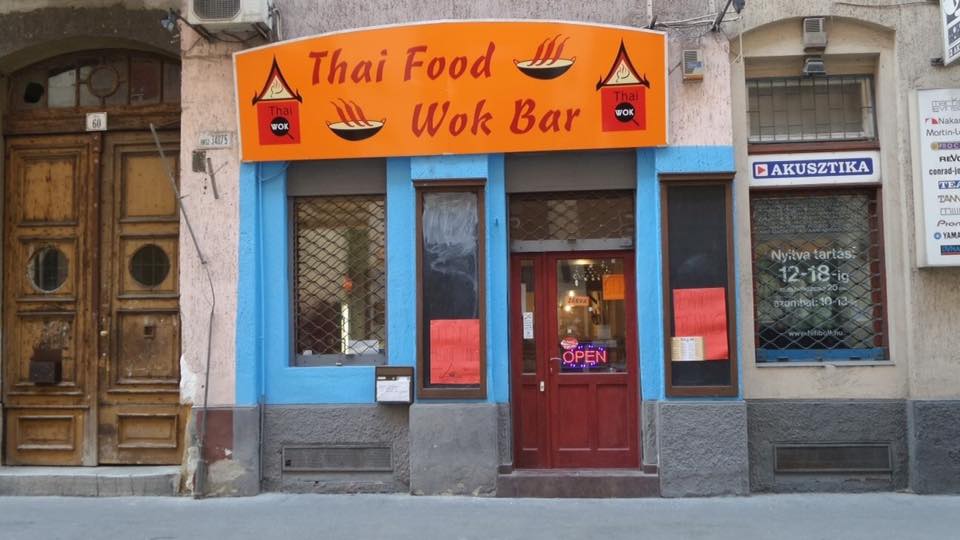
Thai Good Wok Bar
Dob utca 60., Budapest 1073
+36 1 614 5202
The following day, I discover an aerial yoga class in Buda, on the other side of the Duna. Borrowing my cousin’s bicycle, I pedal across the Petofi bridge and along the waterfront, on a well-marked dedicated bike lane. I pass underneath Gellért Hill, with its majestic statue dedicated to martyrs in the long struggle for Hungarian freedom. I then continue alongside two famous bathhouses – the posh beaux arts Gellért and traditional Turkish Rudás– and have a stupendous view of Parliament on the way.
It’s a quick and easy journey, which, sadly, isn’t all too common in BP. Though there are plenty of velo enthusiasts and more and more bike lanes, biking in the capital is definitely a challenge. More often than not, bikes share lanes with traffic, and it can be a bit daunting to weave in and out of cars, trams, and buses. One way streets are common (I seem to inevitably be ALWAYS headed the wrong way), and bike lanes end abruptly and without warning. It’s a kind of urban warfare.

So much so, that my friend János offers classes on how to be a defensive urban cyclist in Budapest. He operates independently but also works at RideKálmán a charity bike shop associated with Szimpla, Pest’s original romkocsma. RK takes donated bikes, refurbishes them and then donates them to children and adults in need of independent means of transportation and exercise. They also rent high-quality bicycles – “because life’s too short to ride shit bikes” – both hourly and daily.
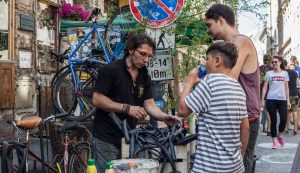
RideKálmán
Kazinczy u. 12.
Budapest 1075
+36 20 248 1446
I arrive at Mantra Yoga as dusk casts long shadows on majestic stone buildings, dating back from the glory days of the Austro-Hungarian empire. The light in Budapest at this time of year is a photographer’s dream – warm and alluring, dappling cobblestone streets and carved facades with its every shifting charms. I’m surprised to discover that despite being on the other side of town and about to engage in a very different form of yoga, Eszter is again the instructor!
The space is a grandiose former apartment with impossibly high ceilings, transformed into an aerial yoga studio with half a dozen silks suspended from exposed beams. It’s a wonderful practice, quite different from the acrobatic and aerobic aerial that I’m accustomed to at my home studio in Colorado. Instead, Eszter guides us through a slow vinyasa using the silk as an aid to stretch more deeply in each posture. She once again offers suggestions to me in English and helps me to make the modifications necessary for my particular physical challenges. After 90 delicious minutes, I feel more limber than I have in quite some time.

Mantra Jógastúdió
Margit körút 31-33, 25-ös kapucsengő
Budapest
hello@mantrajoga.hu
+36 70 560 5918
2500 ft drop in, mat and silk included.
And in classic form, I decide to blow it all to smithereens by meeting my bestie for another night of imbibing. We meet at our usual spot in Buda, Nemdebár, across the street from what I will forever call Moszkva Ter (Moscow Square). It was remodeled and renamed since the fall of communism, and its giant sculptural peon to the workers’ struggle was relocated to the Statue Park outside town. But to me, it remains stuck in its past, a vestige of a bygone time.
We consume several rounds of pálinka while listening to excellent music provided by the record spinning DJ. My bestie is a photographer who works at the gallery of the Moholy-Nagy University of Art and Design, so he keeps me apprised of the goings on of the local art scene. Budapest has a rich photography history and, while I’m visiting, there’s presently an extensive exhibition of her most famous native son, Robert Capa, on view at several locations throughout the city. We linger long into the night, catching up on all that has transpired personally and politically since I was last here. Hungary is once again in a state of flux, with divisions getting stronger and a resurgence of extremism. It’s frightening and all too familiar, and unfortunately seems to be a global trend.

Nemdebár
5, Széll Kálmán tér
Budapest 1024
+36 20 519 8687
Days go by spent visiting relations, attending to family matters and EATING! Esterházy cake and cappuccino at Művész Kávéház with an opera singer friend of the family. Palacsinta (Hungarian crepes) filled with a sweetened mixture of poppy seeds and raisins at the Nagyi, a 24-hour microchain with several locations throughout the city. Lángos (fried dough) smeared with sour cream and cheese at the underpass in Óbuda, en route to visit an uncle. Though I clock dozens of clicks daily on both foot and pedal, I’m aware of slowly turning into a szilvásgombóc (plum dumpling).
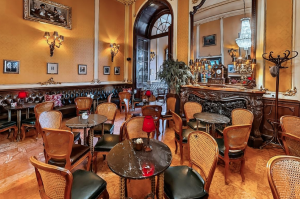
I finally pull in the reins, get back on my yoga horse and track down some more offerings. Downdog Yoga has multiple locations throughout the city, including one minutes away from my home base in the 8th district. I decide to go to a weekend mid-afternoon class. Another remodeled apartment with elaborate plaster ceilings provides the sanctuary for a wide offering of yoga styles. This hour-long Hatha class is not particularly noteworthy (evidenced by the fact that I can’t even remember the instructor’s name). It’s a cookie-cutter practice of standard postures and sequencing with no particular attention paid to alignment or any spiritual components. But time on the mat is still welcome, and, inevitably, I feel more present afterwards, less stuffed and grateful to have expressed some meta.
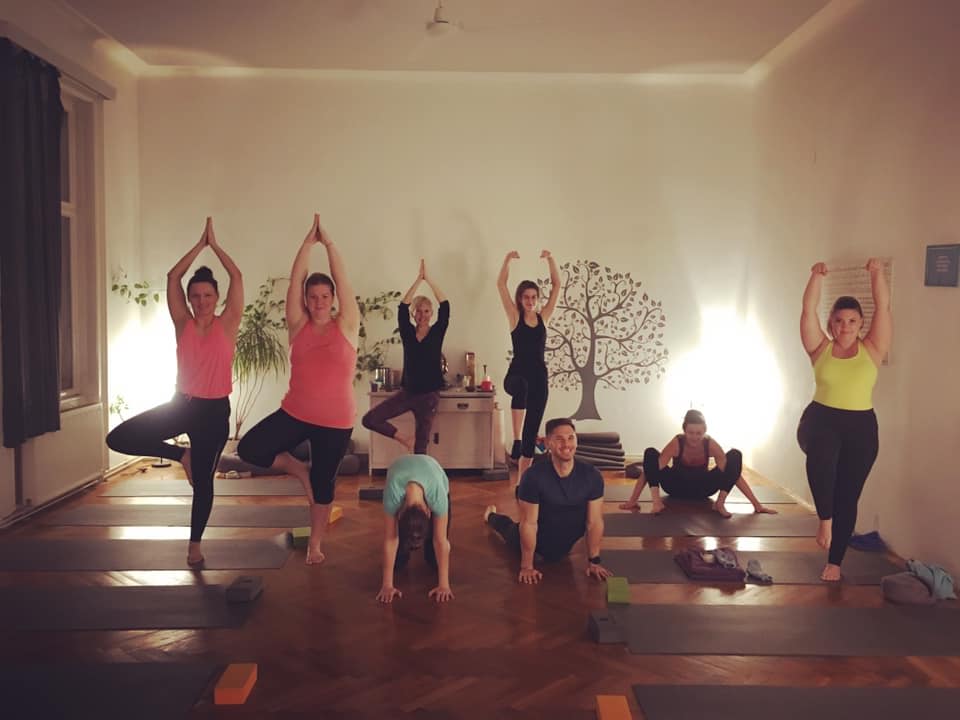
Downdog Jóga Stúdió
Eötvös utca 26/C
Budapest 1067
+36 70 413 0078
190 ft drop in. Mat included.
My final day in Budapest, I find myself at Aum, another studio group with numerous shalas. The one at Blaha Lujza is lovely, replete with a tea lounge and changing room with showers. I’ve come for a 90-minute Iyengar class. I happen to really love Iyengar for its particular focus on precise alignment. I love the intricate props and clever methods of supporting the body to achieve maximum benefit from each posture. It turns out I’m the only student, and I have a remarkable experience with Attila, the dedicated and talented instructor, who speaks English fluently. Attila and I work together, an interplay of effort and energetics, unlike anything I’ve experienced before. An incredible 90 minutes of focused attention and intention that leaves me feeling simultaneously accomplished and humbled.
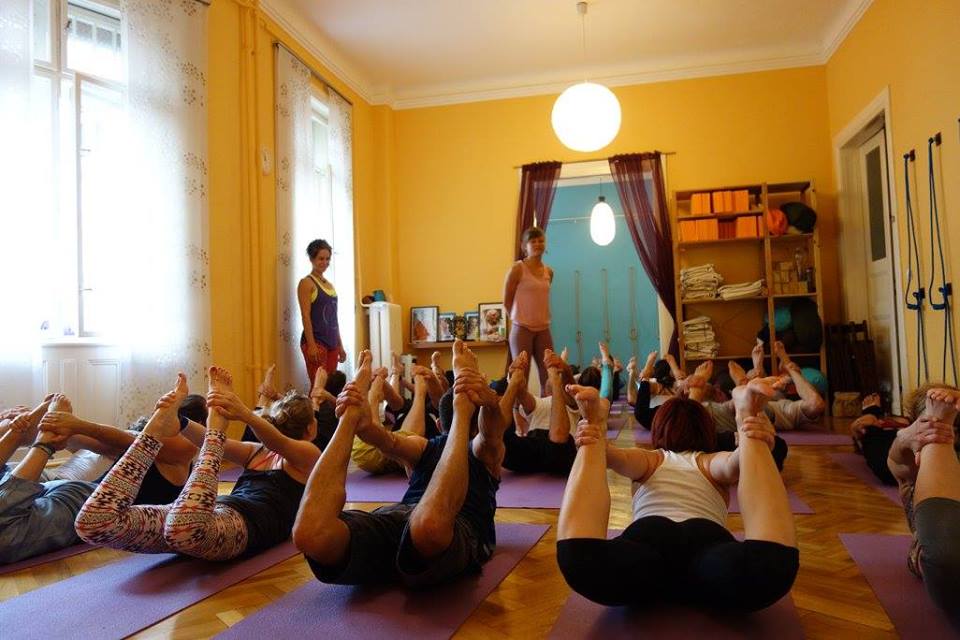
Aum Joga
Károly krt. 3/a
Budapest 1075
2400 ft drop in. Mats and props provided.
And yes, hungry! I meet family members and friends for a final hoorah at Csiga, a go-to of ours for such occasions. The offerings are diverse, with traditional Hungarian dishes and also multi-culti options for diners with dietary preferences. In fact, the menu is written with clearly delineated symbols to indicate allergens.

Csiga Café
Vásár utca 2.
Budapest 1084
+36 30 613 2046
It’s the kind of neighborhood bistro where everyone is happy, where the waitstaff is cheerful, the drinks list expansive, and with charming decor that features local art. Portions are large, platings beautiful, and the food delicious. The gang drinks and dines, shares stories and laughs in a hodgepodge of languages. We raise our glasses for one final toast – “to the next pálinka” – in the hopes that not too much time passes before I once again return to the city of my roots.
Edited by Ely Bakouche


